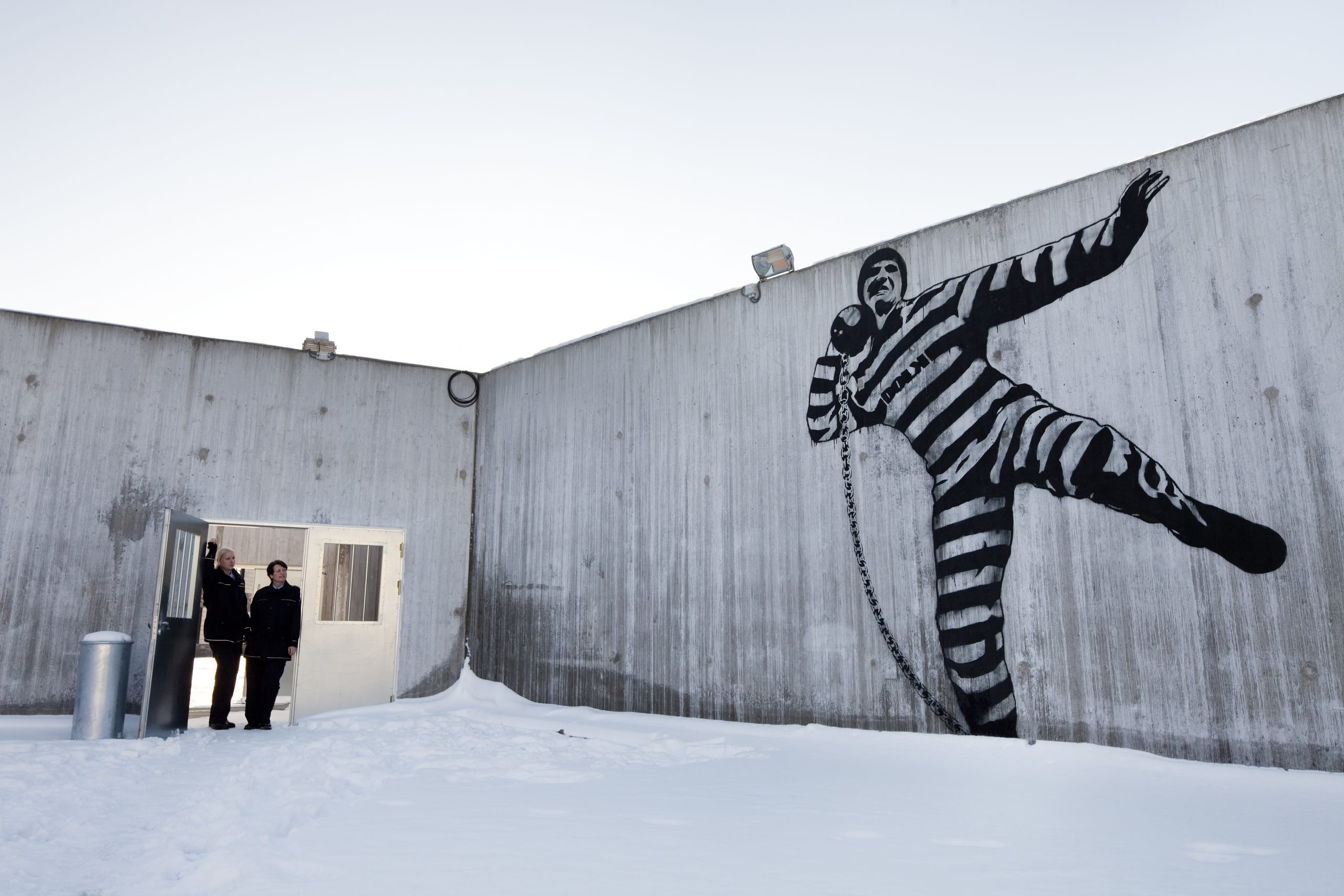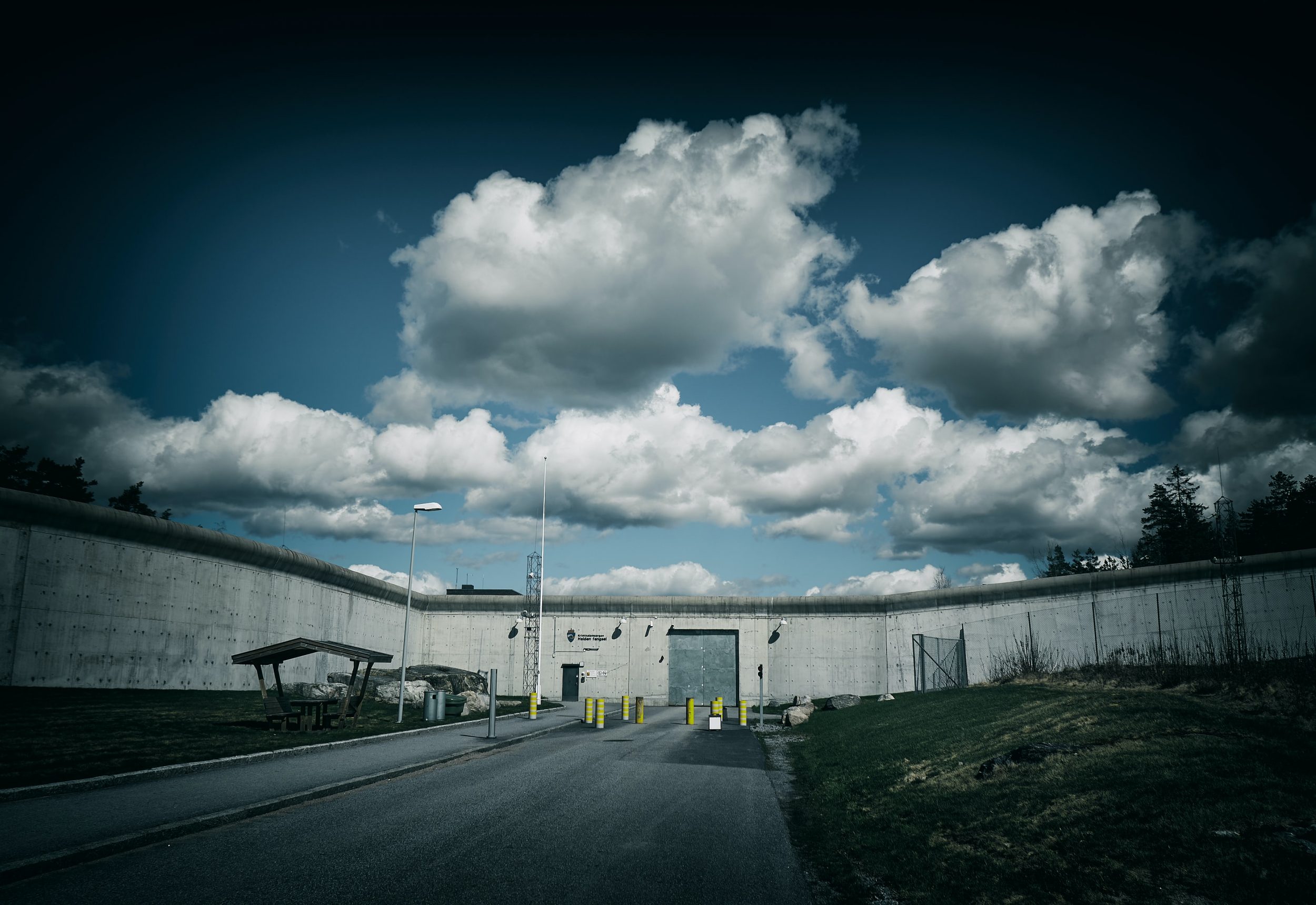Since its construction in 2010, Halden Fengsel, a Norwegian maximum-security prison, has been the site of immense scholarly and public interest. In 2015, The New York Times profiled the prison in a 6,000-word feature, which carried a headline praising the facility for its “radical humaneness.” Other publications have marveled at Halden’s natural lighting and design, private cells, and “luxurious” accommodations that, to many Americans, make it resemble a small college rather than a correctional institution.
As U.S. policymakers continue to grapple with the damage wrought by mass incarceration, many have taken increasing interest in these “Scandinavian-style” prisons, attempting to find ways to emulate their architecture, practices, and policies back in the states. The nonprofit organization AMEND has partnered directly with the Norwegian Correctional Service to facilitate visits by U.S. state correctional administrators. Some states, like North Dakota and Oregon, have even started to adopt aspects of officer supervision practices used in prisons like Halden. More recently, “Restoring Promise,” a partnership between MILPA and the Vera Institute of Justice, has sought to embody the humanizing principles reflected in Norway’s prison system in an effort to transform carceral environments. But in the rush to learn from Scandinavia’s more enlightened penal practitioners, there has been a tendency to pay less attention to the actual experience of those incarcerated.
As researchers, we wanted to better understand the lives of people serving time at Halden and see how much they share similar perceptions of the prison. We started by distributing surveys, asking men at Halden to assess different parts of the prison, including their cells, residential and recreational spaces, programs and services, and relationships with correctional officers and staff. We then conducted dozens of follow-up interviews with people who were willing to share more about their views on the prison. What we found was surprising: Halden’s physical environment may not be having the restorative or therapeutic effects those who envisioned and built the prison intended it to have.
Over the last 60 years, researchers have developed a robust body of scholarship that describes the “pains of imprisonment”, which include depriving people of liberty, services, relationships, personal autonomy, and safety. Additionally, scholars have found that the physical design of the prison interacts with these deprivations. For example, the multi-story cell blocks common to the “Big House” prisons built in the U.S. during the 20th century tend to limit social interaction and contact with officers and other incarcerated individuals. People living in these spaces experience their imprisonment as more painful and dehumanizing when compared to those celled in smaller housing units, or “pods,” with more common space and direct supervision.
Exposure to aversive prison conditions for extended periods of time can result in negative emotions, diminished ability to cope with prison strains, and violent behavior. So much so that highly punitive or “painful” prison environments can become criminogenic, increasing an individual’s likelihood to engage in future criminal behavior.
Halden was intentionally designed to avoid these isolating and dehumanizing features, and incorporates architectural details and environmental features thought to have therapeutic effects (research suggests, unsurprisingly, that private cells, plentiful windows, greenery, and common spaces tend to result in an environment that is more calming than those full of nothing but concrete and razor wire). The prison was also designed to align with a core component of the Norwegian Correctional Service called the Principle of Normality, which emphasizes that carceral environments should mirror life on the outside to the greatest extent possible. These design choices are thought to reduce the harmful impacts of institutionalization and ease the transition back into the community following release, with commutes between residential and work buildings, shopping for one’s own food, and other activities intended to reflect daily life on the outside.
More from our decarceral brainstorm
Every week, Inquest aims to bring you insights from people thinking through and working for a world without mass incarceration.
Sign up for our newsletter for the latest.
Newsletter
Our research hoped to illustrate the experience of being incarcerated at Halden, rather than examining normative questions like whether we should have prisons, or proposals that assess whether it is better to invest in new and improved prisons as a reform strategy. Our results suggest that the design features and correctional practices at Halden avoid many of the most harmful and criminogenic aspects of incarceration, which collectively contribute to the violent prison culture and poor reentry outcomes of U.S. prisons. One feature of the prison’s design, in particular, received many positive evaluations from those who completed the survey: single-occupancy cells. Respondents overwhelmingly appreciated having their own spaces, especially within a high-security prison, and believed this contributed positively to their overall wellbeing. Individuals saw their cells as a private and safe space where they could avoid conflicts and allay negative emotions. One of the individuals we interviewed said that “you can exist here without being depressed by your atmosphere.”
But as numerous respondents pointed out, Halden is still a prison. Collectively, their remarks tended to emphasize that a fundamental goal of prison across countries — to deprive people of liberty and individual freedom — may be incompatible with a notion of a truly therapeutic setting.
As numerous respondents pointed out, Halden is still a prison. Collectively, their remarks tended to emphasize that a fundamental goal of prison across countries — to deprive people of liberty and individual freedom — may be incompatible with a notion of a truly therapeutic setting.
Indeed, the individuals we interviewed perceived no therapeutic effects from Halden’s environment, despite acknowledging the aesthetically pleasing design features. As one person noted, “There is no such thing as motivation in squared walls.” It was apparent that some of the pains of imprisonment persisted, despite Halden’s efforts to design and operate a prison in the hopes of offering a sense of “normality.” “A prison is a prison,” one respondent said. “I don’t really feel anything therapeutic about it.” Some individuals explained that Halden was more run down or restrictive than what they were led to believe, given the press coverage and word-of-mouth stories. When sharing their impressions of the prison, one individual reflected that, “yes, it looks nice, but it has nothing to do with our perception of everyday life.” There were also numerous ways that prisoners were reminded of their limiting situation: They faced constant surveillance, saw locked windows, and were surrounded by the looming wall that encases the prison grounds. It’s true that Halden did not need to resort to bars on the windows or have guard towers manned by snipers. But that is partially because the “tightness” produced by the surveillance and control tactics were an effective reminder that the respondents were captive in a punitive environment.
While the Norwegian Correctional Service asserts that the loss of liberty is the only deprivation inflicted as punishment for a crime, respondents in our study indicated that other pains of imprisonment endured. They highlighted the fact that “loss of liberty” is not a discrete, independent deprivation, but one that has countless meanings and implications. “It makes no difference if it’s made of gold or diamonds, or metal,” one respondent observed. “You’re still locked up.” In fact, most of the individuals we interviewed described pains of imprisonment that were similar to those found in more traditional, punitive prison settings. They frequently mentioned the loss of personal autonomy and decision-making — or as one person characterized it, “physically [the prison] is okay, but psychologically it’s different.” Individuals also lamented the reduced communication with loved ones, and the feeling that life was passing them by while they were stuck on “pause.” The inability to celebrate or grieve with family or participate in their children’s lives was reported as one of the most painful aspects of their incarceration, which is not dissimilar to responses offered by those in more restrictive facilities in the United States.

The loss of autonomy extended to less significant life decisions, too. One person stated that “everything you do, they decide,” referring to activities ranging from the length of phone calls to scheduling medical appointments to taking a walk outside. Other respondents described feeling like children when moved about the prison or asking for permission from guards to access services. In fact, research suggests that the potentially conflicting aims of “normality” and control within Scandinavian prisons like Halden may create confusion about one’s role as a “prisoner” and the limits of freedom and autonomy. One individual described their frustration with this experience, stating, “you are checked and double-checked, metal detectors, you walk in lines, you move in groups; there’s no normality whatsoever.” A prison administrator or correctional system that claims they want prison life to mirror outside life but does not allow for adults to make the types of daily decisions that they are used to making in the free world can induce the very pains of imprisonment that they sought to avoid. Furthermore, the presence of these pains within a rehabilitation-focused prison suggests these punitive aspects of incarceration are not exclusive to more retributive settings. Instead, they are a ubiquitous element of the carceral experience.
So what can we take away from these findings? That incorporating therapeutic elements into prison environments won’t provide benefits? Not necessarily. While respondents did not acknowledge any therapeutic effects of Halden’s design, it doesn’t mean they do not provide any benefit to the wellbeing of those incarcerated there. For example, physical violence at Halden is exceptionally rare and conflict between incarcerated individuals and correctional officers is uncommon when compared to U.S. facilities. Respondents emphasized that they did not worry about their safety, like they would have in other prisons. Without the constant fear of physical harm or need to engage in violence and other tactics for survival, individuals at Halden may have more energy to direct toward participation in individual, positive endeavors or rehabilitative programming. At the same time, however, it is also possible that positive therapeutic effects from Halden’s environment are being overshadowed by the pains of imprisonment and constant reminders of one’s status as a prisoner.
Together, the experiences shared with us by the men incarcerated at Halden prison provide an important counternarrative to press coverage and empirical literature that uncritically highlights the therapeutic benefits of Halden’s environments. Especially as reformers and U.S. correctional agencies continue their efforts to change prisons, it is important to remember that the perceptions and experiences of those directly impacted by prisons are a critical resource for guiding policy. Halden’s striking physical appearance might dazzle reporters, but it’s also a reminder of the dangerous temptation of focusing on changing prison aesthetics while failing to address the deprivations that continue to make even a “pretty” prison a punitive place. Our research suggests that these perceptions and experiences — and those deprivations — are where reform efforts should focus.
Image: Vidar Nordli-Mathisen/Unsplash


